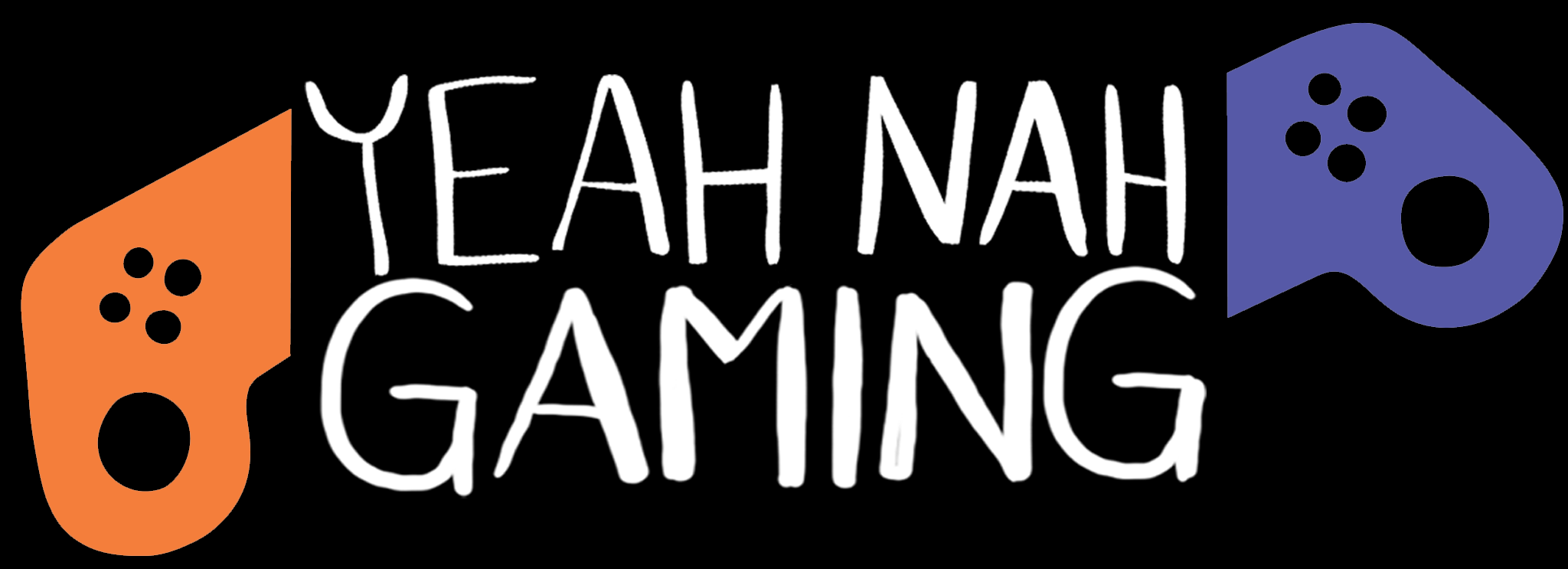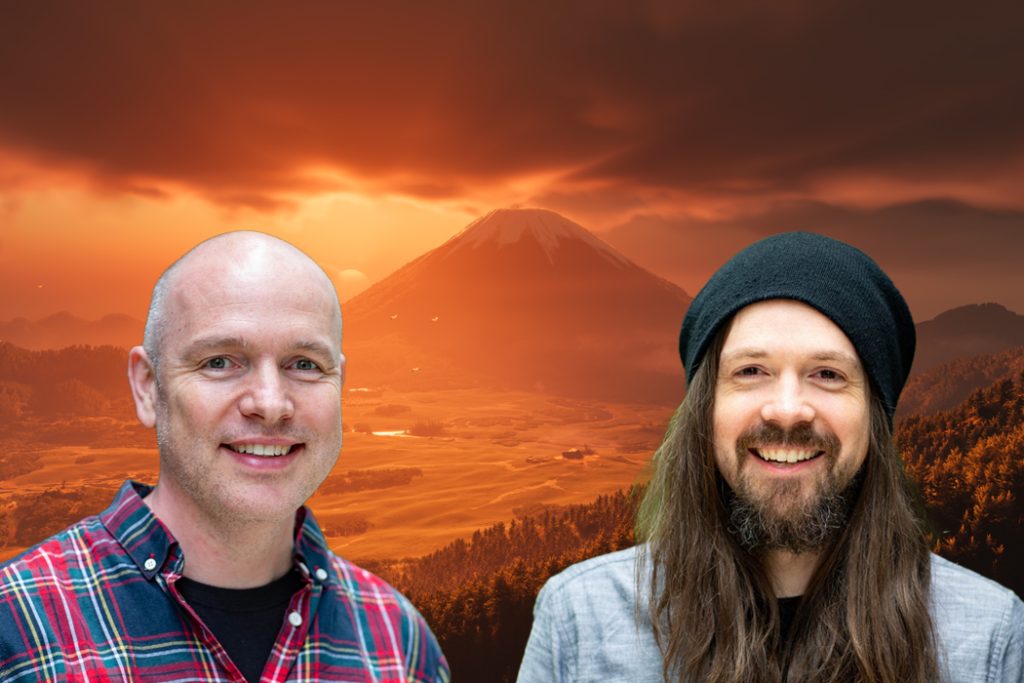Thursday morning sings.
An interview with two souls.
An article born.
I thought a brief haiku would be a great introduction. This morning I was lucky enough to spend time with Sucker Punch Co-Creative Directors, Nate Fox and Jason Connell. They’ve been at the forefront of Ghost Of Yōtei’s final months before release. Once formalities were out of the way, we dived into the sequel to 2020’s Ghost Of Tsushima, talking about Atsu and her thirst for revenge against the Yōtei 6.
From my point of view, he’s the loveliest man in gaming in New Zealand.
A remark made by our meeting rep that made me say “that’s a bit to live up to”. I also wondered when we were going to talk about Atsu. Our rep laughed and handed me over to Nate and Jason via Teams to start our conversation. I thank them for their time and advise the gloomy weather in Aotearoa is a brilliant setting for revenge. And then we begin. “We loved Jin Sakai’s story of this samurai bound by honor, and how he gave it up to save his people”. This was in direct response to my question on why the story takes a new turn instead of sticking with Jin Sakai.
“The thing is at Sucker Punch, we love origin stories.” I can see what they mean. 2002’s Sly Cooper was a huge success on the PlayStation 2, leading them to create a successful trilogy. The fourth title for PlayStation 3 was developed by another studio. This was because when the PlayStation 3 came around, Sucker Punch created the inFAMOUS franchise. Making another successful trilogy, it parlayed onto the PlayStation 4 with Second Son. Then toward the end of the PlayStation 4’s lifecycle, they released Ghost Of Tsushima.
“[And so] The prospect of telling a new story about a person who takes on this identity as a ghost in feudal Japan, this time as an Onryo, a kind of a creature of folklore that people believe her to be, is something that really appealed to us.”
Nate Fox, Co-Creative Director (Sucker Punch Productions)
“[And] We came up with this idea of a woman on a revenge quest inside of Ezo, which is modern day Hokkaidō.”

If you don’t know, Hokkaidō is Japan’s northernmost island.
It is known for its vast landscapes, cold winters, and major role in Japan’s agriculture and tourism. It also holds strategic importance due to its location. And it’s home to the Indigenous Ainu people, whose culture is experiencing a strong revival. “That was a land that really inspired us with its great beauty” says Fox. “Around 1603, there was a suddenly a peace on the main islands and all of these sellswords suddenly had nothing to do. And a good number of them went north up to Ezo, and the place was incredibly dangerous.”
I wondered about Connell’s thoughts on Jin and Sucker Punch’s love for origin stories. “I mean, and if you look back over our catalog of games that we’ve made at Sucker Punch, we do really value origin stories”. This in turn lead Connell to mention one of my favorite games from them; inFAMOUS. “The first game that Nate and I directed together was actually [inFAMOUS] First Light. It was a sort of extension of Second Son which, again, we were like, ‘Hey. Let’s go make a focus on the origin story of this other person!.'”
I think really the true thing is that we love creating landscapes and worlds and finding one that’s as tonally as powerful as Ezo.”
Jason Connell, Co-Creative Director (Sucker Punch Productions)
Additionally, Connell elaborates on the wild of Yōtei. “It’s a dangerous landscape. It’s filled with a wildness to it that wasn’t really part of Tsushima”. If you’ve played Ghost Of Tsushima, you reflect on the warmth of the environment. While you partake in revenge, the land welcomes you. Almost pushing you forth to ensure you succeed in your quest. But that won’t be the case for Atsu. A reflection of the centuries passed and the rage she embraces for her own journey. “It is vast. There’re these massive mountains, Yōtei being one of them. That married really well with a story of vengeance, with somebody hunting others in this landscape. And so this propelled us even further to create a unique new story inside of this unique environment.”
I applauded them for their statements around the Ainu and their place within Hokkaidō. And asked where the line is for Sucker Punch as acting custodians for a culture, versus delivering a product for a wider audience. Connell responds:
“That’s a skill that, frankly, when you think about making games prior to this game [you know], we think about making games, so you’ve got animators and artists and engineers and designers and directors. Right? And we made this for the franchise; the Ghost of Tsushima. We had to sort of really think about what ‘team’ means, and we added in all these advisors in areas that we were just completely ignorant on.”
He further elaborated on this want to respect the culture they were weaving their story throughout. “[And] We had no idea other than the sort of basic sort of understanding from entertainment, movies, things that we watch, which might get us close especially because we were watching some period-piece type authentic stuff from Akira Kurosawa, but still there’s no…there’s not a real deep intellectual understanding of things.”
“And so we were sure to make mistakes.”

So really surrounding ourselves with advisors was the right move for Tsushima and really helped that experience, and it helped set us up to be bold and brave.”
Jason Connell, Co-Creative Director (Sucker Punch Productions)
“We actually had to surround ourselves with some new advisors” says Connell. “The Ainu people of Hokkaidō, which we knew virtually nothing about. And certainly not enough to make decisions about how they are represented inside the game. We were able to make some great connections there.”
Once again, Sucker Punch have stunned me with the way they go about creating their game. “We actually got to meet them when we were in Hokkaidō and they they were lovely” says Connell. And I can see why. A successful Western studio has reached out to ensure the story they tell doesn’t reduce your cultures place in history. Especially when attempts on this have already happened. “We’ve got a great relationship helping us understand how to thoughtfully, politically and respectfully represent this culture.”
“That’s a huge part of our game development process now.”
As we wind down this category of questions, I thank Fox and Connell for bringing up the Ainu. I remark that these indigenous peoples have reached out to Māori in New Zealand, to learn skills to help them revitalize their own language and strengthen their connections amongst their people. It also provided a brilliant segue to questions around the design elements for the upcoming PlayStation exclusive, Ghost Of Yōtei.
You can read up on this over at XENOJAY.COM.


1 Comment
Pingback: IN OUR NATURE | Part 2 of an Interview with Nate Fox and Jason Connell